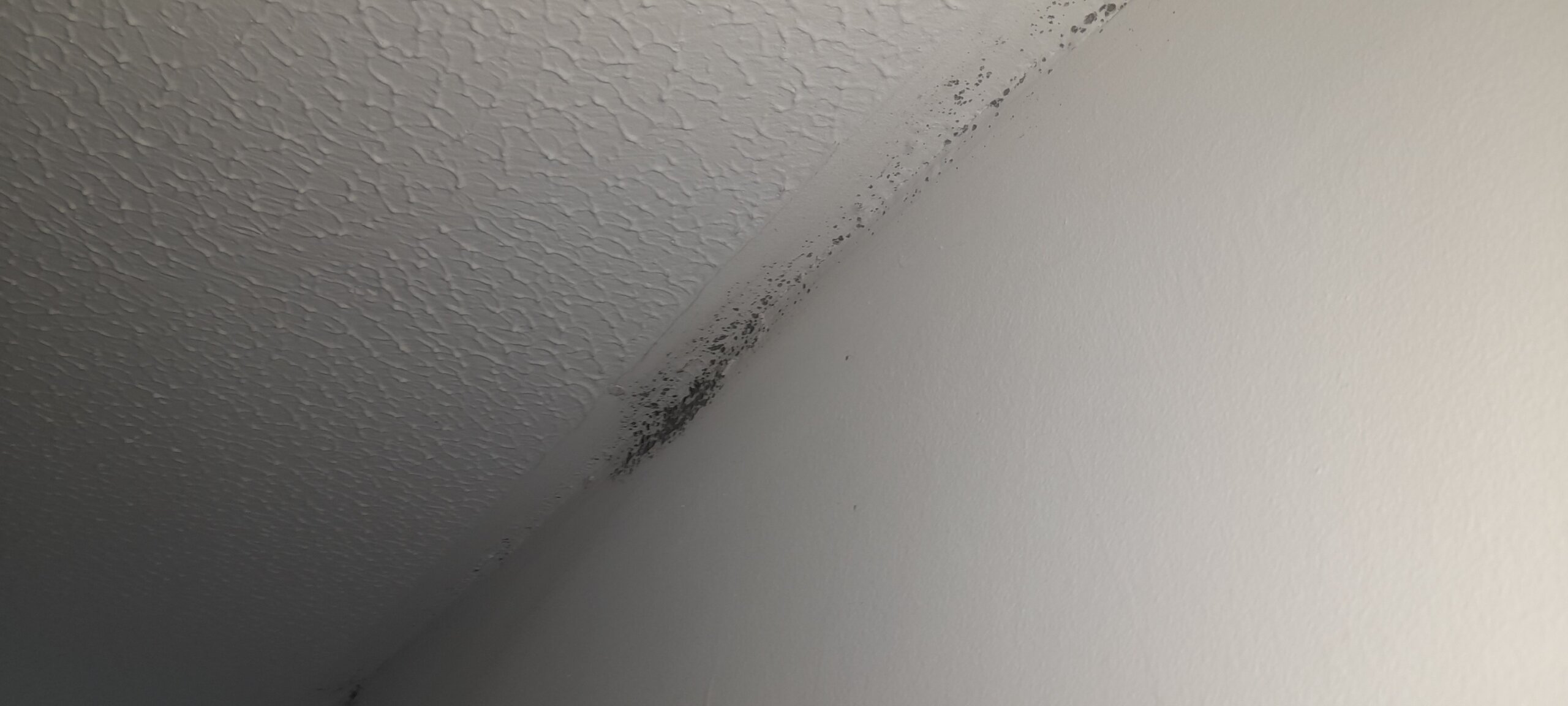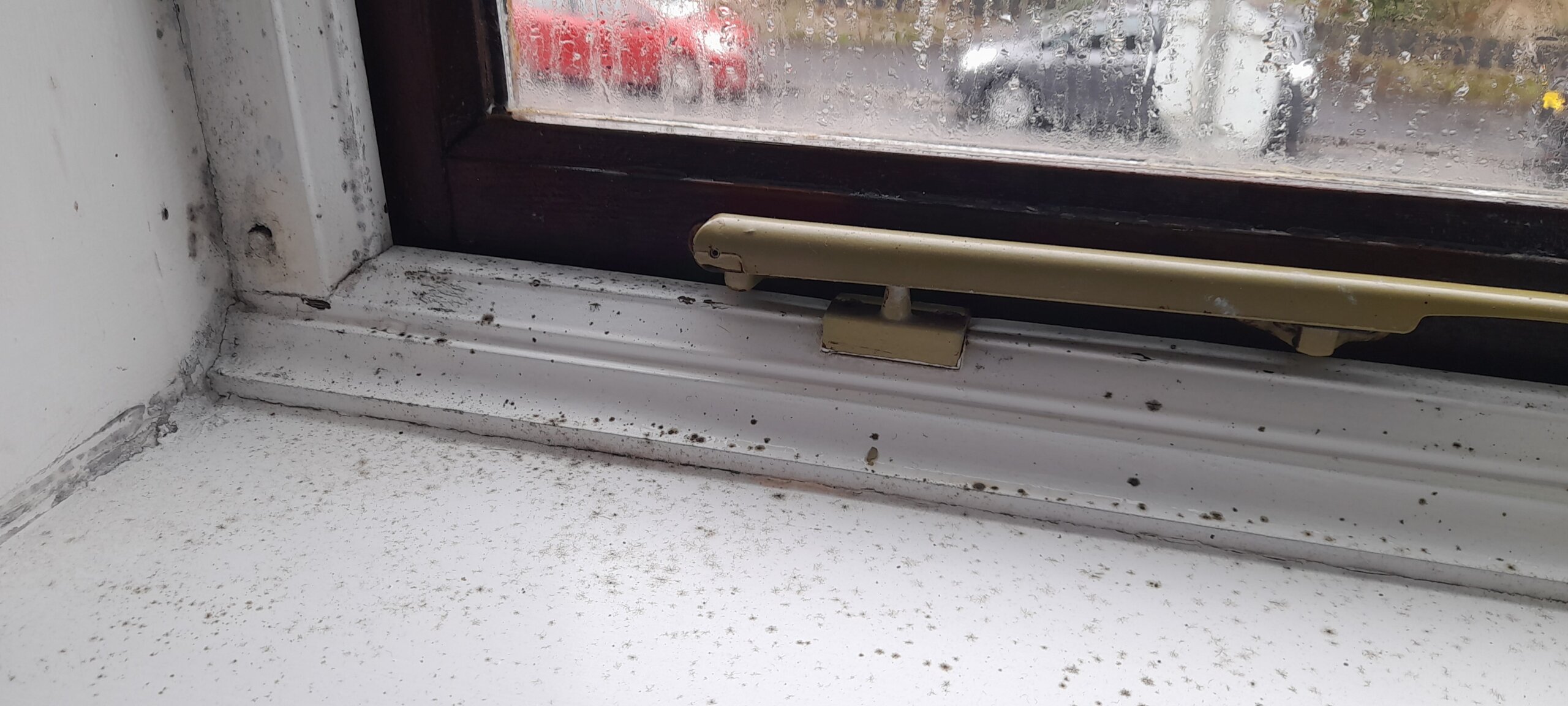Mould, it’s more common than you think.
December 2022 was the first time in over a decade Liverpool experienced a white Christmas. Heading into the second half of March in 2023 it seems winter is flexing its muscles by giving us a final showdown with snow and ice. Fortunately, spring is in the air and it won’t be long before we can start moulting the many layers of blankets and jumpers we have built up around ourselves during this frigid and harsh winter. The long winter has left many of us with an unsightly problem- mould.
What is mould?
Mould is a fungus that grows in damp and moist conditions. In winter we tend to keep our windows and door shut for most of the time, this is a proven recipe for mould to start flourishing. Our homes are the ideal place for mould to grow as it offers the correct environment; warm air, moisture and materials to feed on such as wood, carpets and wallpaper found in plasterboard. The most common areas you will find mould is on window sills and in the corners of walls and ceilings.
What causes mould to grow?
The most common reasons for mould growth are poor ventilation, humidity, rising damp and moisture. Rising damp is a serious issue and this could be as a result of poorly insulated walls or incorrectly installed DPC (damp proof course) DPC is used in construction for prevention of moisture from passing into interior spaces. It is rare for new build homes to have incorrectly installed DPC due to building control regulations, but in older builds, incorrectly installed or lack of DPC can cause rising damp issues. With rising damp you will notice it first at the bottom of walls, skirting boards and basements.
Common types of mould.
The one most of us are familiar with is called Aureobasidium. It starts life off light brown or pink in colour and when fully matured, it turns dark brown and spreads rapidly. This type of mould can cause skin infections and is dangerous to breathe in. Always wear the correct gloves and breathing protection when tackling this in your home. Black mould is another common mould usually found on window sills and in the corners of ceilings, usually in the bathrooms and bedrooms. Generally, black mould is not dangerous but there is a certain strain of black mould called Stachybotrys. This strain is a health hazard, especially for children and it should be dealt with as soon as possible.
How to treat mould?
For minor patches of mould growth found in your home a good practise to remove mould is to use the paint brush and bleach technique. Brush the entire area with bleach, making sure to scrub, and let the bleach sit for a minute. Use a paper towel to wipe off the residue. If you are not a fan of bleach, white vinegar will work too. You may have to repeat this step several times as mould tends to grow back in the same spot even if a tiny piece is left over. If left for too long, mould can stain walls and ceilings. In this instance, use the brush and dry method. Allow the area to dry completely then apply a product called stain blocker which comes in aerosols or paint tubs. Apply one coat to the whole area and leave to dry. Then, with a matching colour, apply a coat of paint suited for the room you are working in.
In cases where the mould infestation covers more than 1m², a water leak from a water pipe or damaged roof may be to blame. It is best to seek out professional advice in this case. With rising damp issues you may have to consider contacting a professional builder to install a damp proof course. This will ensure your home is protected from ground water making it’s way into your home.
Prevention is better than cure.
A well insulated and ventilated home is the first step in avoiding the grow-up of mould. Towel dry excess moisture from windows in the morning and ensure the home is ventilated at least once a day by opening windows and doors. If the weather is poor and opening windows is not an option, a de-humidifier can help in removing excess moisture from the air. Escaping steam from cooking also causes build up moisture in the air but this can be countered by using your stove’s extractor fan or by opening windows. Another good tip is to use lids on your pots and pans when cooking.
Out of control mould?
Feel free to contact DK building today for a professional analysis of your home’s mould problem. Over the years we have seen it all and we have the knowledge and ability to get your home mould free. Although specialising in building work, from garage conversions in Warrington to loft conversions in Liverpool, we have vast amounts of experience in dealing with mould and other homely issues!





